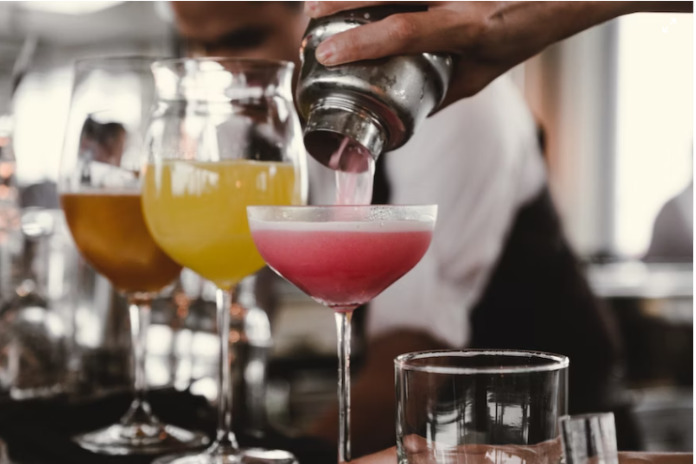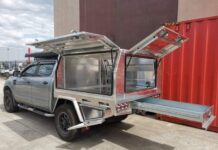Almost all food processing operations use ice, which is made by a special machine. Ice is also necessary for serving cold drinks in cafes and restaurants, preparing cocktails, and serving chilled fish products in retail stores. A professional ice block maker is necessary because ordinary refrigerators cannot make enough ice. This device is represented by models from many well-known manufacturers. At the same time, you need to know how to choose an ice generator and what key parameters should be emphasized in each specific case. The principle of operation of the ice generator is to quickly freeze water at a low temperature. The key feature and difference between different models of ice makers is the type of ice produced. Before choosing a device, think about what type of ice you need. The principle of operation of the device largely depends on this.
Cube-shaped, cylindrical, finger-shaped forms of ice. This is especially pure ice, which is formed when a layer of water freezes. It is used for cocktails when cold drinks are served with whole or crushed pieces of ice (the ice is transparent and brittle). This type of ice maker has a water pre-filtering scheme. Ice in the form of scales. In the production of this type of ice, water is sprayed into a special drum and a thin flaky layer is frozen before cutting. Flake ice is primarily in demand as a cooling surface when serving perishable foods such as salads, meat, and fish. Granulated ice is made by crushing the ice particles that form on the surface of the evaporator with the help of special rollers. Such ice is a natural form and is most often used to serve ready-made food from Swedish offers.
What are the key things to pay attention to when choosing an ice generator model for shops and restaurants?
For the ice generator to perfectly cope with the tasks, it is necessary to take into account the following key things: type of cooling. The most popular ice generators have air cooling. The performance of such devices directly depends on the ambient air temperature, so it is not recommended to use them in compact “warm” kitchens and other rooms with high air temperatures. The device must be installed leaving an opening for air circulation. Water-cooled ice makers are mainly used in warm, humid rooms and open kitchens. They offer the same high efficiency in ice production and save up to 10% in electricity, but use more water.
The efficiency of the ice maker plays a key role in its purchase. The productivity of a standard model ice maker ranges from 10 to 50 kilograms of ice per day. It is important to choose the capacity of the ice generator for a specific institution, taking into account the number of services and the number of visitors. More power is needed for industrial purposes. Connection type of ice maker. Some models of ice makers receive water directly from the tap. Other ice makers need to pour water into them independently. Energy consumption. Food industry enterprises pay a surcharge for energy consumption. It will not be superfluous to know and take into account the energy consumption of each device used.
The principle of operation of these devices is the same. The key basis of the generator is a standard evaporator of the same design, which is found in all household refrigerators. Water is under pressure on the surface, which causes the ice to freeze. After that, hot steam is applied to the ice, after which the created ice falls from the surface and falls into a special container. This container maintains a constant low temperature so that the ice does not melt. Hoppers are usually equipped with a level indicator so the user knows how much ice is available and can turn the unit off and on again. When the tank is full, the device turns off and restarts. The automation provided by the timer allows the ice maker to operate independently of the user’s actions, with minimal maintenance.
Ice comes in many shapes, including cubes, pyramids, cylinders, granules, and flakes. Some ice makers only make certain types of ice. There are many examples of various options for the use of multifunctional modern ice generators. Thanks to this device, you can get a large amount of the desired ice in a minimum time. Now there are even more devices for making ice. The bottom line here is that kitchen appliances evolve just like other appliances. As a result, their size decreases. This means that you can now organize your appliances on the kitchen table. Marketers are always thinking about how to create products that have a huge impact on customers and create demand. An ice maker is not considered an essential item. Nevertheless, many people cannot do without it.
Do you need a home ice maker?
The characteristics of the home ice maker are different, they depend on the specific model and the specific needs of the owner. The key purpose of an ice maker is to make ice. Any device will create a certain amount of ice. Of course, many of us need it in our everyday life. You can make delicious iced coffee. Someone needs to make ice in a Coke or make a cocktail with ice. In this case, as in many other cases, ice is needed. Without ice, it is difficult to prepare a delicious refreshing drink, especially in the summer during the heat. When you don’t need a lot of ice, you can make it as quickly as possible. Fill the ice cube tray with water. Then place these molds in the ice maker. A little time will pass and the ice will be ready. If you like mojito cocktails or other types of cocktails, often go out with friends, or just want to drink freshly squeezed juice with ice, then you need an ice maker. You cannot do without this device. You probably remember the healing properties of ice. You may ask how it is used for cosmetic purposes. And you will understand that ice is a must.
Home ice generator and its operation
The principle of operation is very similar to a refrigerator. Ice on the surface of the evaporator gradually freezes. To speed up the process of ice formation, water must be supplied continuously. This is the mechanism of the compressor ice maker. Freezing technology is also used in industrial ice generators. Therefore, when the cooled ice flows out of the cavities of the mold, the water finally freezes. There is no difference in the default duty cycle of the ice maker for different models. First, add water and press the button to start the ice maker. After some time, the pump starts sucking water. It is placed in a chamber where ice is formed. This is how the process of ice formation begins. The cycle completes successfully when enough time has passed to make the ice. The ice production cycle can be completed in three cases: at the discretion of the user (the user presses the end of the ice production button) and by de-energizing the device. If there is not enough water (in this case, the ice generator gives a signal). It is necessary to add a certain amount of water to the ice maker. When the ice container is full. Emptying the container will restart the ice maker. To keep the ice clean, you need to filter the water you pour into the ice maker.
Read Also: How To Protect Yourself From the Summer Heat




































































